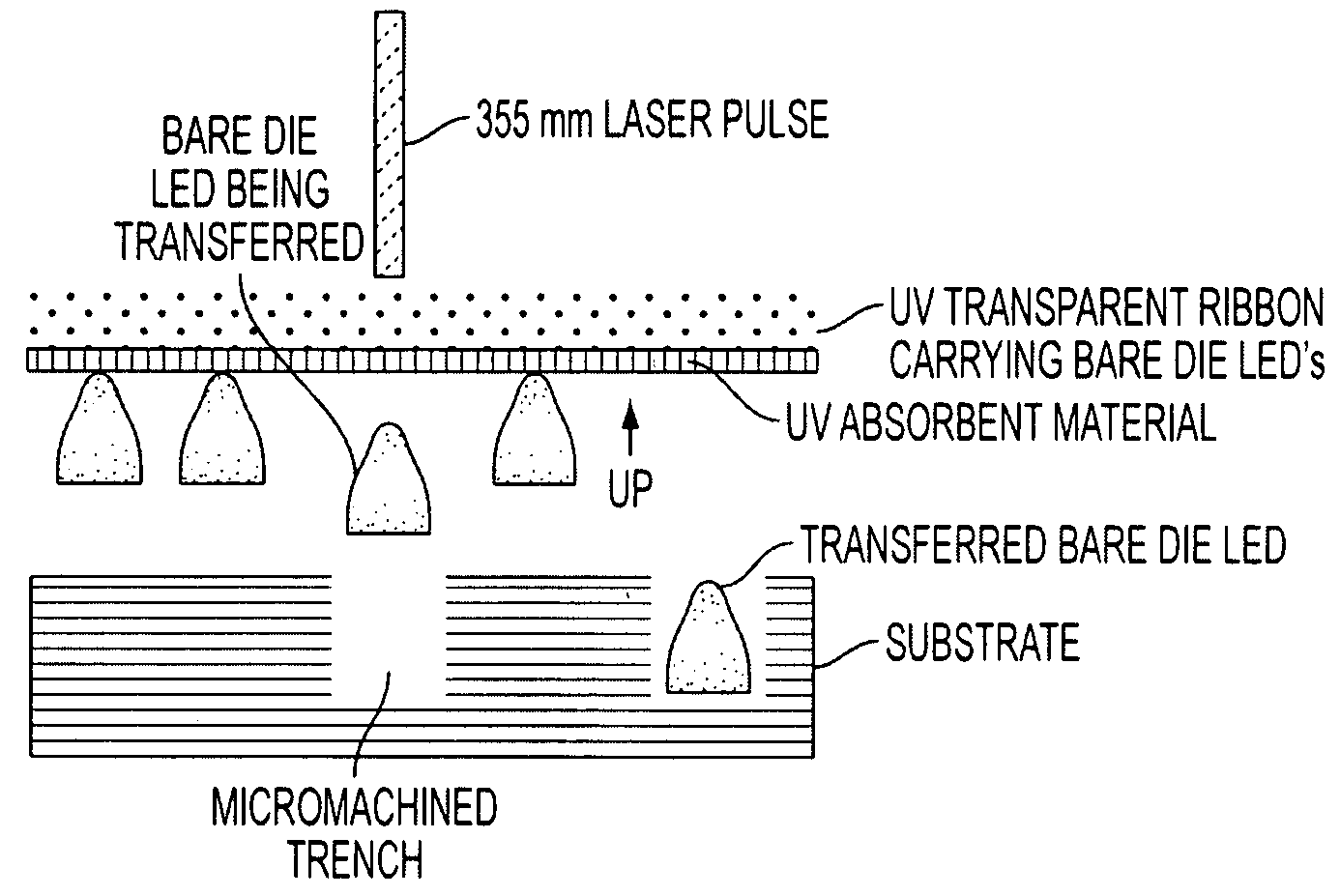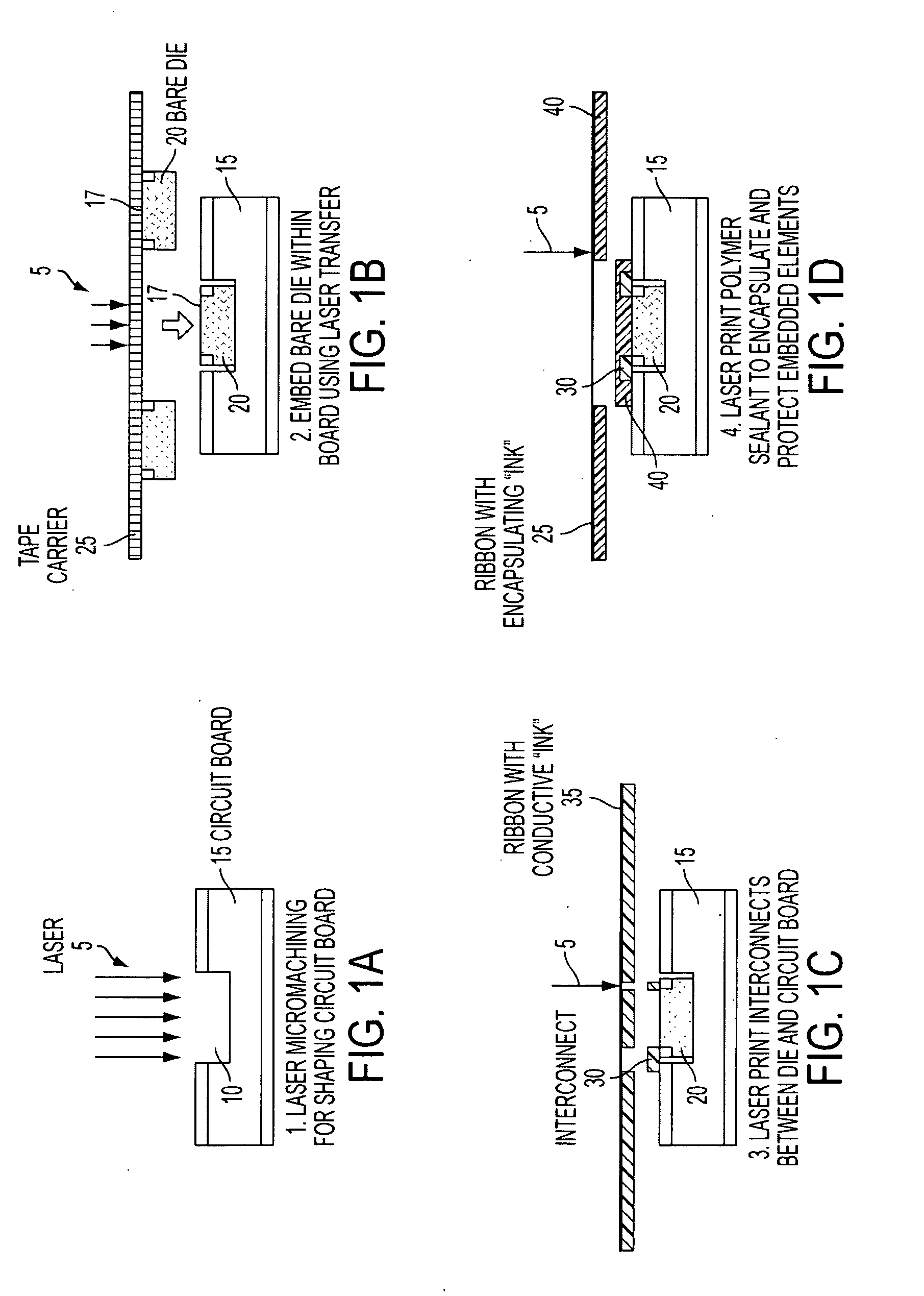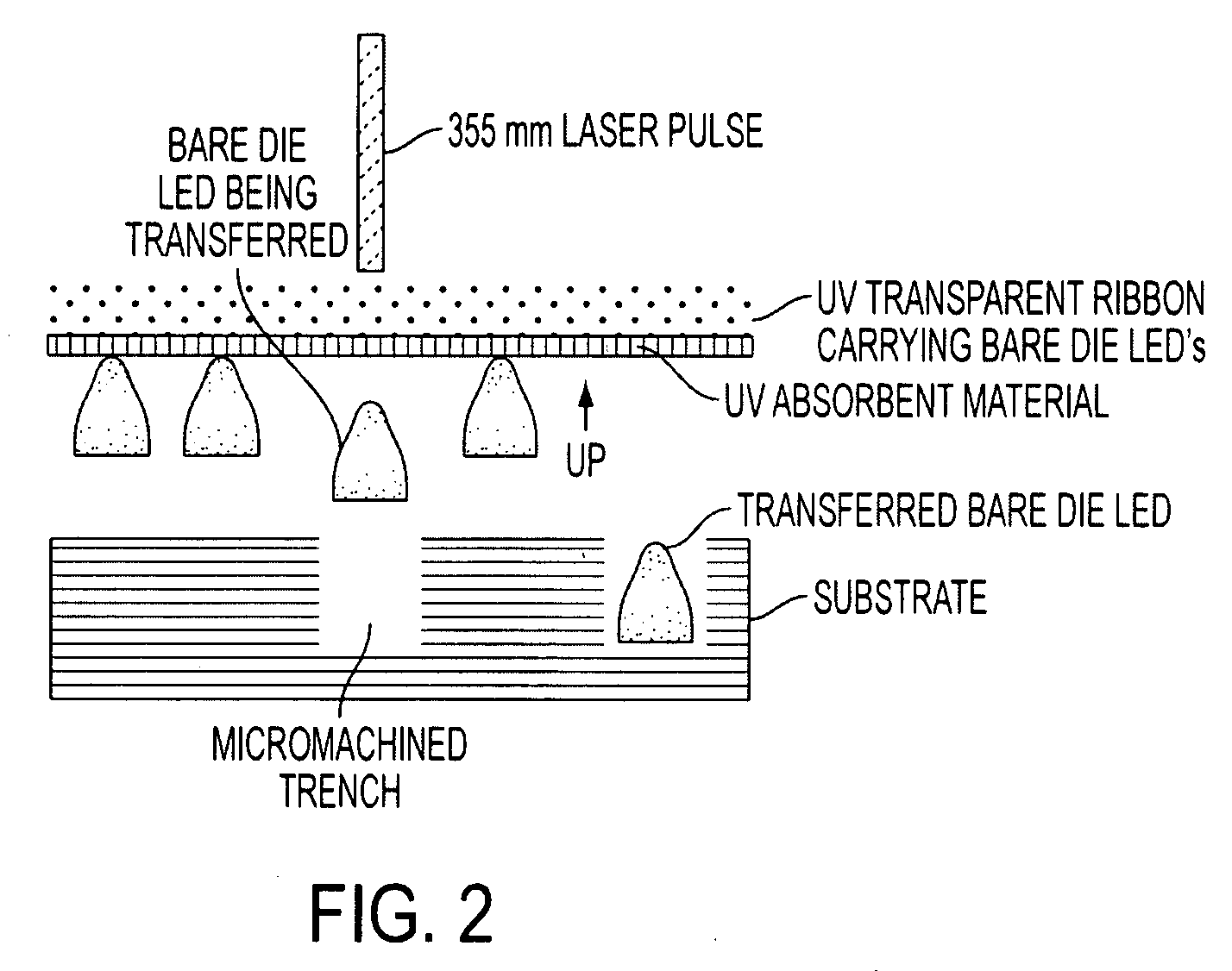Laser-based technique for the transfer and embedding of electronic components and devices
a technology of electronic components and lasers, applied in the direction of transfer patterning, lithography/patterning, printed circuit aspects, etc., can solve the problems of inherently limited approaches, no techniques capable of transferring, mounting and interconnecting unpackaged semiconductor devices (baredies) onto circuit boards or other types of substrates, and limit the level of miniaturization that can be achieved
- Summary
- Abstract
- Description
- Claims
- Application Information
AI Technical Summary
Benefits of technology
Problems solved by technology
Method used
Image
Examples
Embodiment Construction
[0026]In contrast to traditional pick-and-place techniques used in populating circuit boards with the required components and devices for a given electronic circuit, the laser based technique allows for the placement and interconnection of the unpackaged components and devices inside the circuit board or any other substrate for that matter. By placing the individual components inside the substrate, i.e. embedding them, it is possible to use the substrate to protect and package the individual devices, in other words, the board becomes the package. Then the use of laser printing techniques allows the direct-write of the interconnects required by the circuit and the deposition of upper encapsulating layers (if required) thus resulting in a functional circuit embedded under the substrate surface. This laser-embedded circuit occupies a fraction of the volume of that of a circuit made with traditional manufacturing processes because the packaging required by most of its components is no l...
PUM
| Property | Measurement | Unit |
|---|---|---|
| thickness | aaaaa | aaaaa |
| thick | aaaaa | aaaaa |
| thick | aaaaa | aaaaa |
Abstract
Description
Claims
Application Information
 Login to View More
Login to View More - R&D
- Intellectual Property
- Life Sciences
- Materials
- Tech Scout
- Unparalleled Data Quality
- Higher Quality Content
- 60% Fewer Hallucinations
Browse by: Latest US Patents, China's latest patents, Technical Efficacy Thesaurus, Application Domain, Technology Topic, Popular Technical Reports.
© 2025 PatSnap. All rights reserved.Legal|Privacy policy|Modern Slavery Act Transparency Statement|Sitemap|About US| Contact US: help@patsnap.com



